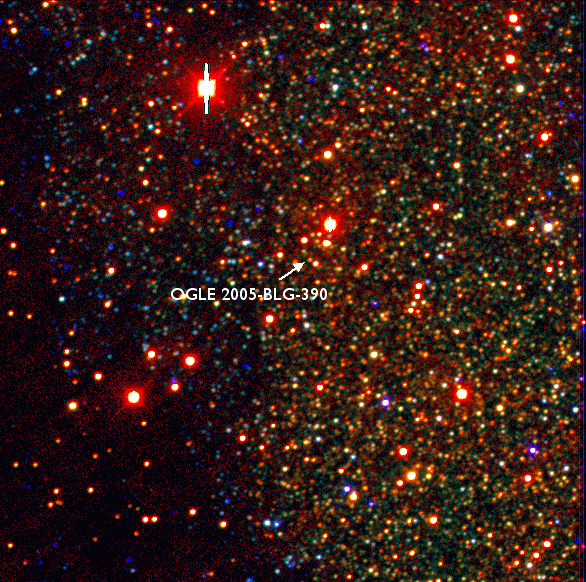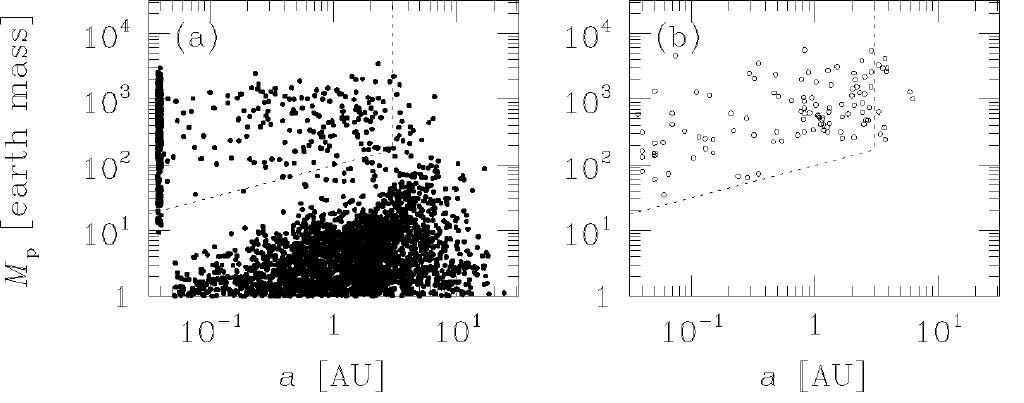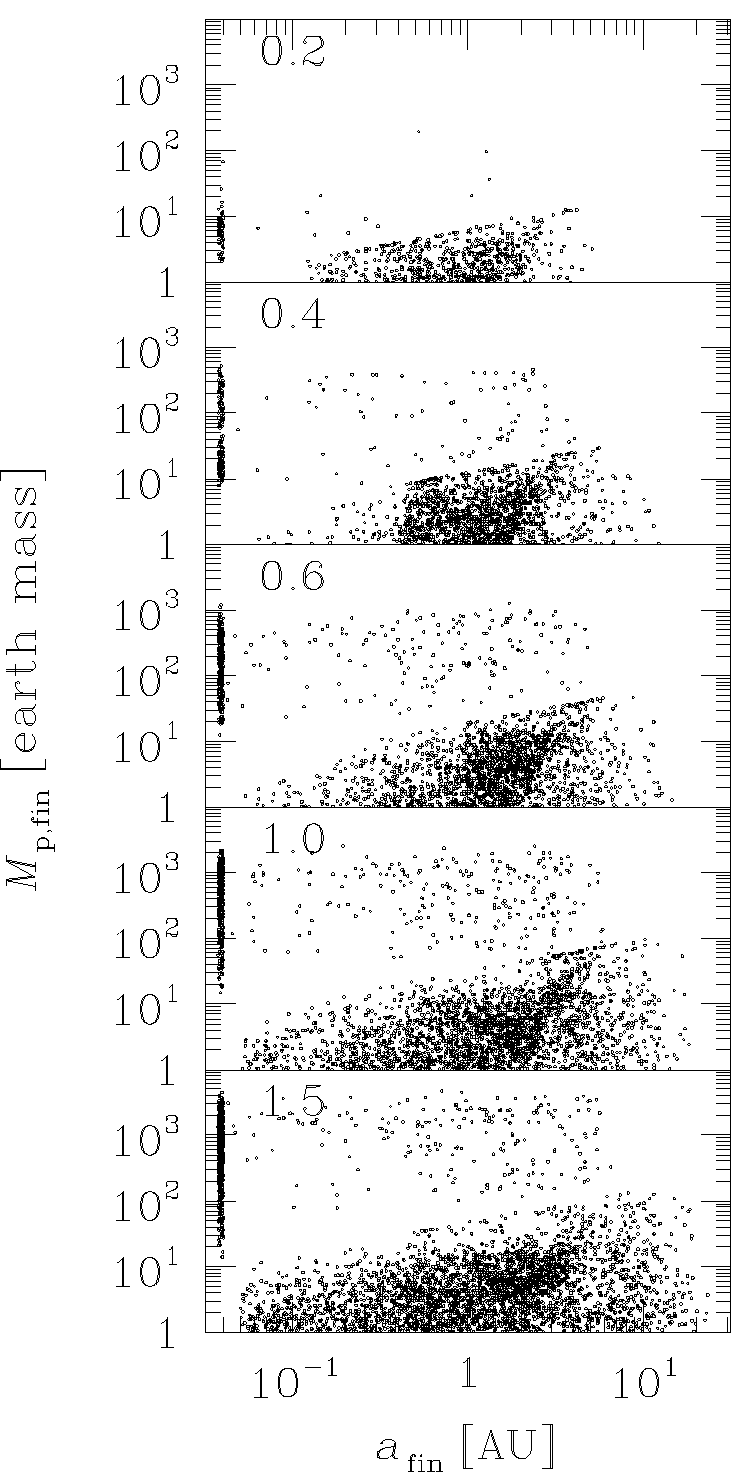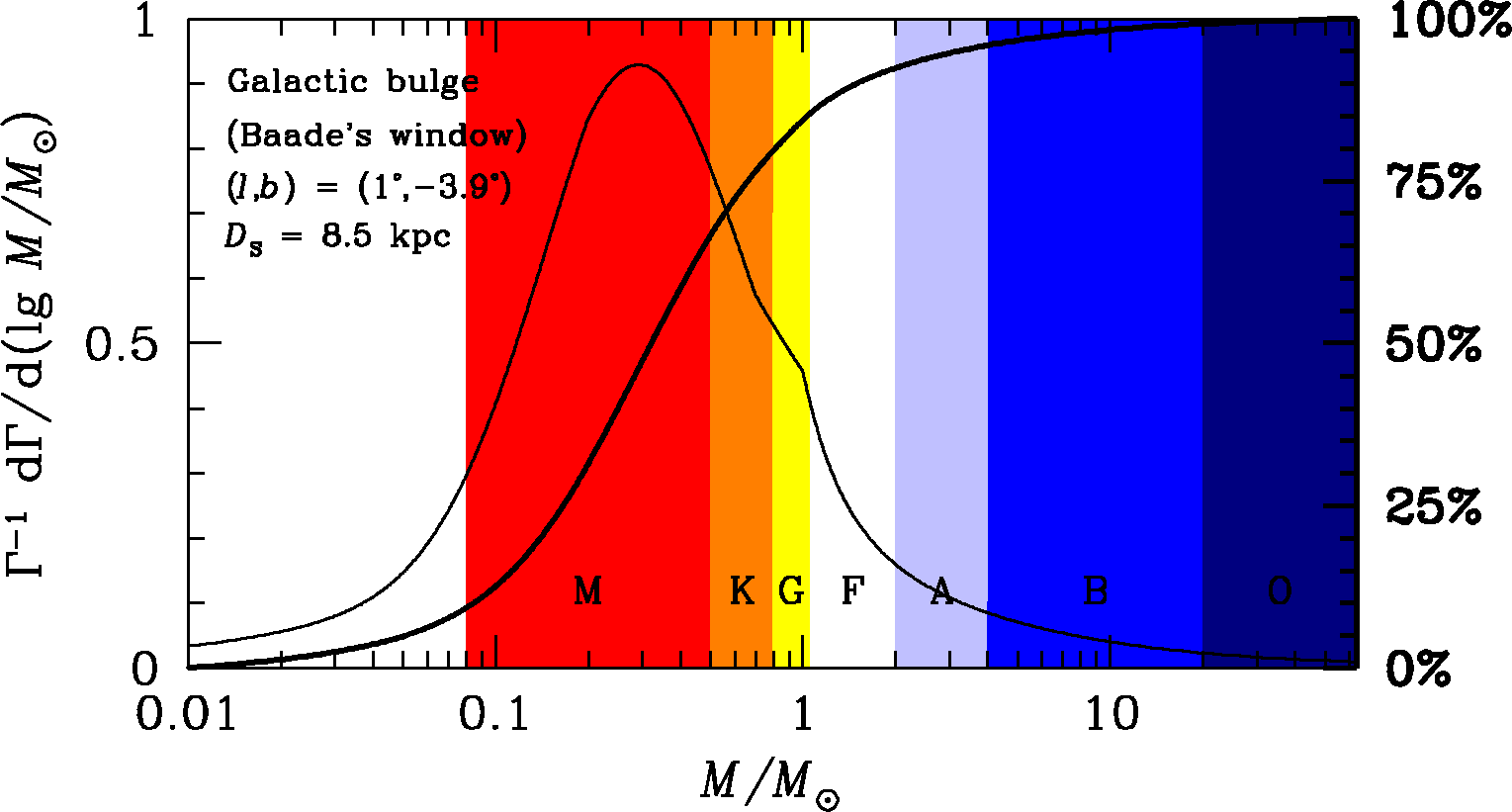
|
Discovery of OGLE 2005-BLG-390Lb, the first cool rocky/icy exoplanet
|

|
Discovery of OGLE 2005-BLG-390Lb, the first cool rocky/icy exoplanet
|
Microlensing observations of event OGLE 2005-BLG-390 have provided evidence that the lens star, presumably an M-dwarf with 0.2 Solar masses, is orbited by a planet with only about 5 Earth masses (uncertain within a factor of two) at 3 AU with a period of 10 years. This discovery was reported as the joint effort of three independent microlensing campaigns (PLANET/RoboNet, OGLE, and MOA) in a Letter to Nature.

The event OGLE 2005-BLG-390 was reported by the OGLE Early-Warning System (EWS) on 11-Jul 2005, and was then monitored with the telescopes constituting the PLANET/RoboNet network. The light curve initially followed the characteristic brightening expected for a single isolated lens star and a point-like source star, which in this case is a G2-4 giant, and reached a peak magnification of about 3 on 31-Jul. However, on 10-Aug, an anomalous rise by 0.15 mag was observed by PLANET/RoboNet with the Danish 1.54m at ESO LaSilla (Chile), while an OGLE point from this night showed the same trend. By succeeding in monitoring the second half of this anomaly, lasting about half a day, with the Perth 0.6m (West Australia), and previously obtaining a dense coverage of the peak region of the event, we were able to conclude that the lens star is orbited by a low-mass planet, which is designated OGLE 2005-BLG-390Lb. The MOA collaboration was able to identify the source star on its frames and confirmed the observed deviation.

The light curve of OGLE 2005-BLG-390 can be followed on an animated frame, created from a convolution of a frame observed with the Danish 1.54m at ESO LaSilla and the model light curve (by Daniel Kubas). The observed brightening is caused by the bending of light due to the gravitational field of lens star and surrounding planet, resulting in three images of the source star, which are distorted and magnified (or de-magnified). The full mechanism behind this event can be seen in animations showing the images (MPEG4 hi-res: full view, adaptive zoom-in, planet zoom; MPEG2 low-res: full view, adaptive zoom-in, planet zoom) while the lens star together with its planet passes near the line-of-sight between observer and source star (by Andrew Williams & David Bennett). For the latter, a structured surface including starspots and limb-darkening have been considered. Following an idea by Liebes (1969, Am.J.Phys. 37, 103), which is also discussed extensively by Surdej, Refsdal, & Pospieszalska-Surdej (1990-1995), a set of plastic lenses that mimic the gravitational light deflection has been produced by David Cochrane (Industrial Research Ltd., NZ) to be used in didactical experiments by Phil Yock and Kevin Taylor (University of Auckland, NZ).
From the light curve, we infer an event time-scale tE = 11.0 d, in which the source star moves by one angular Einstein radius θE relative to the lens star on the sky, making OGLE 2005-BLG-390 one of the shorter events. Moreover, we find t∗ = 0.28 d, in which the source moves by its own angular radius, which we estimate from the observed luminosity and colour to be θ∗ = (5.25 ± 0.73) μas. This yields a proper motion &mu = 210 μas d-1 = 7.6 mas yr-1 and the angular Einstein radius as θE ~ 210 μas. The planet affects the light curve only by means of two dimensionless parameters, which are the mass ratio q = 7.6 × 10-5 and d = 1.610, where d θE is ithe current angular separation from its parent star (the orbital period exceeds by far the duration of the observed anomaly).
Mass and distance of the lens star are related by the measured angular Einstein radius, but neither of these quantities is obtained directly. However, we can calculate probability densities based on the likelihood for a certain value to produce the observed event with its given parameters, where mass functions for lens and source stars in the galactic bulge and disk as well as their spatial mass density and velocity distribution for a double-exponential disk and a tilted barred bulge have been assumed (Dominik, 2006, MNRAS 367, 277 ). Such an analysis yields the masses of lens star and planet as M ~ 0.22 Msun (2.1) and m ~ 5.5 M⊕ (2.1), respectively, and the lens distance DL = (0.85 ± 0.15) RGC, where RGC ~ 7.6 kpc denotes the Galactic centre distance. Assuming circular orbits and averaging over the unknown orbital orientation and phase, we find an orbital radius a = 2.9 AU (1.6) and a period P = 10.4 yr (2.0). Except for the lens distance, the logarithmic average is quoted and numbers in brackets indicate uncertainty factors corresponding to the standard deviation of the logarithm of the respective quantity.

OGLE 2005-BLG-390Lb appears not to be massive enough for being able to accrete a substantial amount of gas to become a gas giant planet like Jupiter or Saturn. Instead, its expected surface temperature of 50-70 K points to an icy nature, making it a more massive version of Pluto or resembling the cores of the ice giants Uranus or Neptune, rather than the inner rocky planets like Venus or Earth.
Microlensing planet searches are unique in their sensitivity to low-mass planets orbiting their parent star at a few AU (which are therefore cool), and currently provide the only opportunity for discovering Earth-mass planets. Its mass and orbital radius makes OGLE 2005-BLG-390 distinct from all other (about 170) extra-solar planets detected so far, and make it the one most similar to Earth, although it fails to provide conditions suitable for supporting life.

Simulations of planet formation and migration based on core-accretion models (Ida & Lin, 2004, ApJ 616, 567) show a remarkable agreement with the observed distribution of semi-major axes and planet masses in the region to which radial-velocity surveys are sensitive. While in a hotter zone closer to the host star, planets have to form from small grains of dust, sand, and pebbles, the planet formation is supported by material in the form of snowballs sticking together in a cooler zone outside the so-called ice boundary. Planets forming there are likely to grow to gas giants and undergo inward migration, with a fair fraction ending up in close orbits, constituting the hot planets. However, the simulations predict a substantial sub-population of planets below 10 Earth masses at orbital semi-major axes between 0.1 and 10 AU, who failed to accrete a substantial amount of gas, so that the rocky/icy core forms a defined surface. Habitable planets are to be found among this sub-population to which current radial-velocity and eclipsing-transits surveys are blind, whereas microlensing is well-suited to probe it.

Simulated (left) and observed (right) distribution of planets with mass and orbital semi-major axis (Ida & Lin, 2004, ApJ 616, 567). The sensitivity of radial-velocity surveys is indicated by a dashed line. The predicted strong sub-population of planets below 10 Earth masses at semi-major axes between 0.1 and 10 AU is inaccessible by these, but can be probed by microlensing. |

Distribution of planets with mass and orbital semi-major axis for different masses of the host star, following from a simulation based on a core-accretion model (Ida & Lin 2005, ApJ 626, 1045). While rocky/icy planets below 10 Earth masses are predicted to be common for all host star masses, massive gas giants become rare for M-dwarfs. |

Distribution of lens mass for brown dwarfs and main-sequence stars among the ongoing microlensing events. The bold line shows the cumulative distribution, and the spectral type is indicated by the coloured regions. About 50% of the events involve M-dwarfs. |
OGLE 2005-BLG-390Lb is only the third extra-solar planet resulting so far from microlensing searches. The other two microlensing planets, detected in events OGLE 2003-BLG-235/MOA 2003-BLG-053 (Bond et al., 2004, ApJ 606, L155) and OGLE 2005-BLG-071 (Udalski et al., 2005, ApJ 628, L109) have masses of a few times that of Jupiter. The relative sparsity of detections is due to the fact that Jupiter- or Saturn-like gas giant planets, which are much easier to detect than less massive rocky/icy planets, appear to be rare around red dwarfs (cf. Ida & Lin 2005, ApJ 626, 1045). Since microlensing relies on the gravity of the lens star, rather than on its light, these are favoured due to their large abundance and constituted the parent star for all three detected planets. The discovery of a rocky/icy planet already as the third one detected through microlensing is a strong hint that, in contrast to massive gas giants, these objects are quite common, in qualitative agreement with the prediction from core-accretion planet-formation simulations.
The discovery of OGLE 2005-BLG-390Lb encourages the intensification of microlensing planet searches with current and additional facilities from the ground - or even with a space-based campaign in the near feature. These will provide a census of cool rocky/icy planets around red dwarfs providing the first test of models for planet formation on objects that share their formation history with habitable planets.